Times may be tough, but having the right finishing kit could help make things so much easier - literally.
Yes, we’ve already seen the opportunities out there for PSPs capable, and willing, to change things up. Dare I even mention PPE production? The point is, there are numerous applications - many of which are yet to be discovered no doubt - that could help your business thrive in this ‘new normal’ where reduced staff numbers are also an issue and lean manufacturing a key focus. Having the right finishing kit could be core to your progress, so for this feature we asked manufacturers/suppliers of such kit ‘what developments give large-format PSPs added applications flexibility and maximum efficiency?’ Here’s the upshot of what we got back…
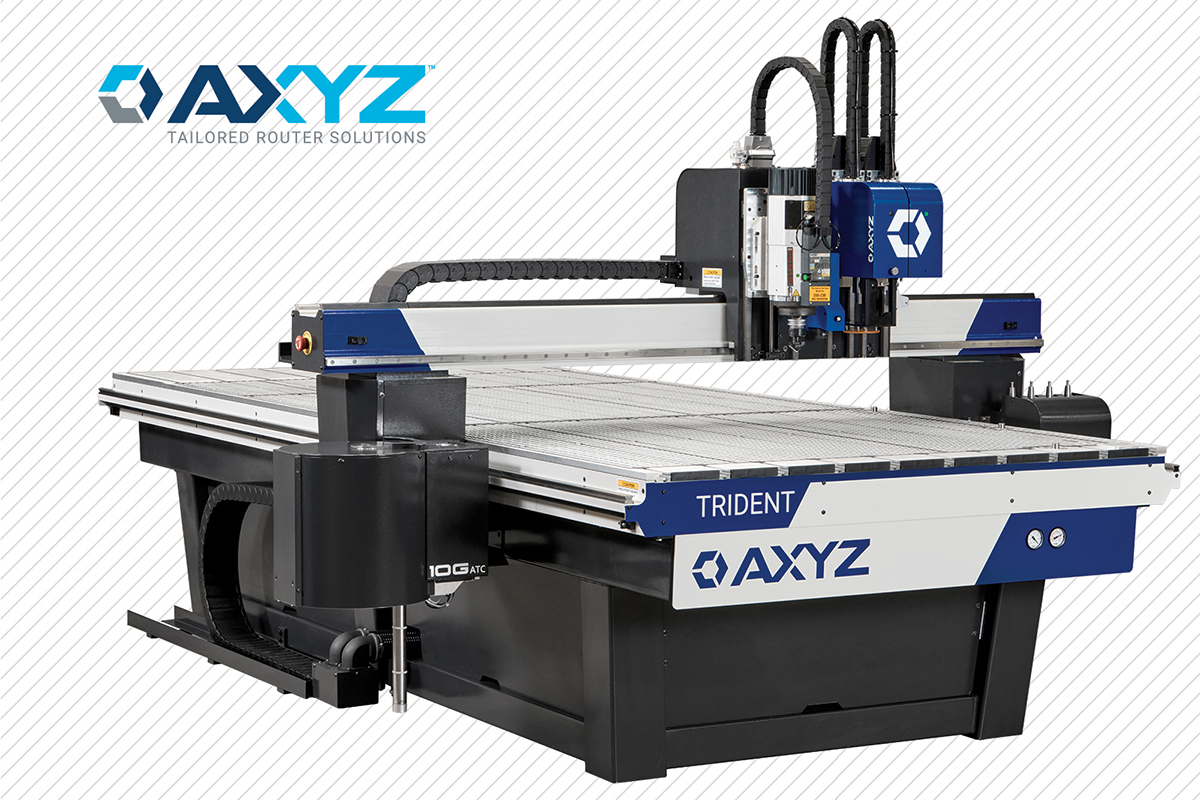
AXYZ
An upgraded version of the AXYZ Trident print finishing system has been introduced by AAG (AXYZ Automation Group) that incorporates design features and production tool enhancements to radically extend its existing automation, performance and configuration capabilities.
The AXYZ Trident - available in four standard sizes (4008, 4010, 5010 and 6010), with processing bed areas ranging from 1,524 x 1,219mm up to 2,159 x 3,048mm and a length of 1,259mm (customisable up to 15m if required) - incorporates a multi-purpose processing head comprising a 10HP 24,000rpm quick-release HSD routing spindle and tangential and scillating knife-cutting units.
The new machine has a four-position tangential knife-changer to supplement the (up to 21-station) Automatic Tool Change (ATC) facility, dust extraction and spray mister units, the AVS (AXYZ Vision System) for optimum material registration and alignment, and a raised gantry height capability for the processing of materials up to 125mm thick. By the by, a narrower carriage also contributes to a 12% reduction in footprint.
As UK general manager Theresa Scarth points out, in addition the new AXYZ Trident has other standard and optional enhancements too, including the latest A2MC machine controller, a live vacuum deck, and the latest helical rack and pinion drive system with a multi-teeth configuration that helps spread the workload more evenly.
The machine - which can handle flexible, semi-rigid and rigid materials - is supplied as standard with Vectric VCarve and optional Aspire design and production software, with the latter enabling more complex 2D and 3D work.
Blackman and White
“Lockdown was a great opportunity to further accelerate some of the development work on the Genesis-V and Z cutting systems, enhancing the functionality of the latest tooling, new and powerful motion control and workflow-optimising software,” according to director Eiko Ichikawa-White, pointing out that the company’s product range “now encompasses digital connectivity, and no longer is the machine a stand alone piece of equipment as cutters are conventionally perceived, but instead is now a measure of efficiency and productivity and a part of the brains of a business.”
The new ViZeo is a scanning system for reading registration dots or outlines of printed images. A high resolution camera array allows a full table area 3.2m X 3.2m to be scanned in under three seconds. An unlimited number of registration marks can be located to within 0.1mm.
Outline scanning allows printed textiles with a solid black line outlining the shape to be processed without the need to create a separate cut file. Full automation is possible with a roll of material containing many different patterns and programs to be loaded and cut without any operator involvement. There’s full integration with software which supports all popular printer formats including Onyx, Caldera, ErgoSoft and Asanti.
Ichikawa-White also points to another development. “With a gantry based motion system the cross axis mostly referred to as the Y axis is normally much less massive than the X axis. Based on the fact that Force = Mass X Acceleration, this means that for the same amount of Force the Y axis can accelerate much faster than the X axis. Most control systems do no take this into account and limit the acceleration to the slowest axis. Whilst it is relatively simple to overcome this for linear movements the equations become extremely complex when you start to consider complex curves and splines. The Blackman and White system slices the motion into time segments typically around 1 millisecond, and for each of these the maximum acceleration is used without ever exceeding the limitations set by Max Accel X,Y and Z.
“The benefits are that the cut lines in the Y axis will be processed almost twice as fast as those in the X axis resulting in higher throughput of production. Complex curves will accelerate faster depending on the angle all processed within the motion controller.
Tight curves requiring very fast rotation of the C axis will automatically slow down the X and Y axis producing a higher quality curve always at the maximum machine speed. Splines are generated from the design software and passed to the controller in a spline format, removing the approximations created by fitting arcs to complex curves.”
In addition, Blackman and White has created an inline processor that sends an optimised version of the G code to the controller thereby speeding up the process lag time significantly. And the machine provides run time data that captures efficiencies whilst simultaneously feeding information to the tools to ensure that cut accuracy and efficiencies can be measured. A CAD editor has also been integrated into the front-end.
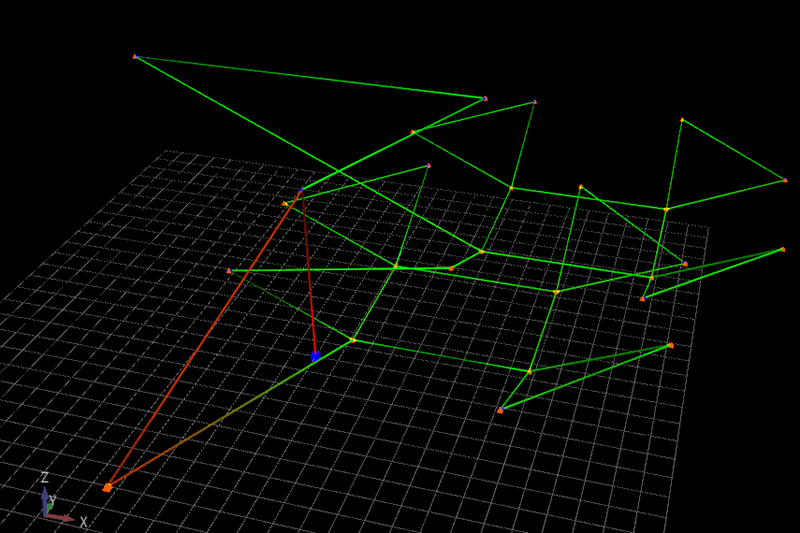
Caldera
Caldera has brought out PrimeCenter - a prepress automation solution designed for wide-format print-and-cut workflows. Developed in cooperation with Zund, the Caldera-owned and branded product has been developed to meet the move from a “ready to print” to a “ready to produce” mindset.
The software solution sits upstream from the Rip, enabling production to be scaled. It consolidates preflight, bleeding and nesting into one tool. Different input image files (pdf, tif, jpeg, png) coming in from clients can be automatically prepared and optimised. These files are preflighted, marked and nested together, into ready for production layouts.
PrimeCenter doesn’t replace the Rip as it does not directly drive any printer or cutter, but acts as a firewall, preventing earlier issues at the production stage. Production is streamlined thanks to the PrimeCenter’s ability to inject job meta data, and this contributes to complete workflow tracking using XML to connect to MIS and ERP solutions.
There are three editions of the product. PrimeCenter Basic requires users to manually apply a combination of actions such as preflight, nesting and bleeding in what are called recipes.
PrimeCenter Pro represents a step up - the application of recipes is semi-automated via the automatic import of incoming files. Layouts are automatically generated, though not instantly exported to the controller or the Rip. PrimeCenter Max handles the latter too.
CWT
Papergraphics represents CWT in the UK, and according to John Selby, “strangely enough, the past two months have proved to be very busy with sales of CWT tables, especially the new Evolution. We can only assume it is due to the demand for social distancing floor stickers. Using an application table to apply a laminate or self-adhesive vinyl could improve productivity by up to 80%.”
CWT tables all have a tempered glass top to prevent bowing and distortion when under roller pressure. But, as Graham De Kock points out, “in the past the speed and consistency of the top rollers horizontal movement has been manually operated and therefore controlled by each individual table operator. This means the amount of time the nip of the top pressure roller is in contact with the media surface will vary from operator to operator and may vary along the length of a board. CWT has recognised this limitation and solved it with the all new CWT Evolution.”
The table includes a remote controlled motorised drive system. It controls the pressure nip time, which combined with a new heated top roller, allows users to eliminate silvering associated with some vinyls and laminates while ensuring a consistent and accurate pressure is evenly applied and maintained.
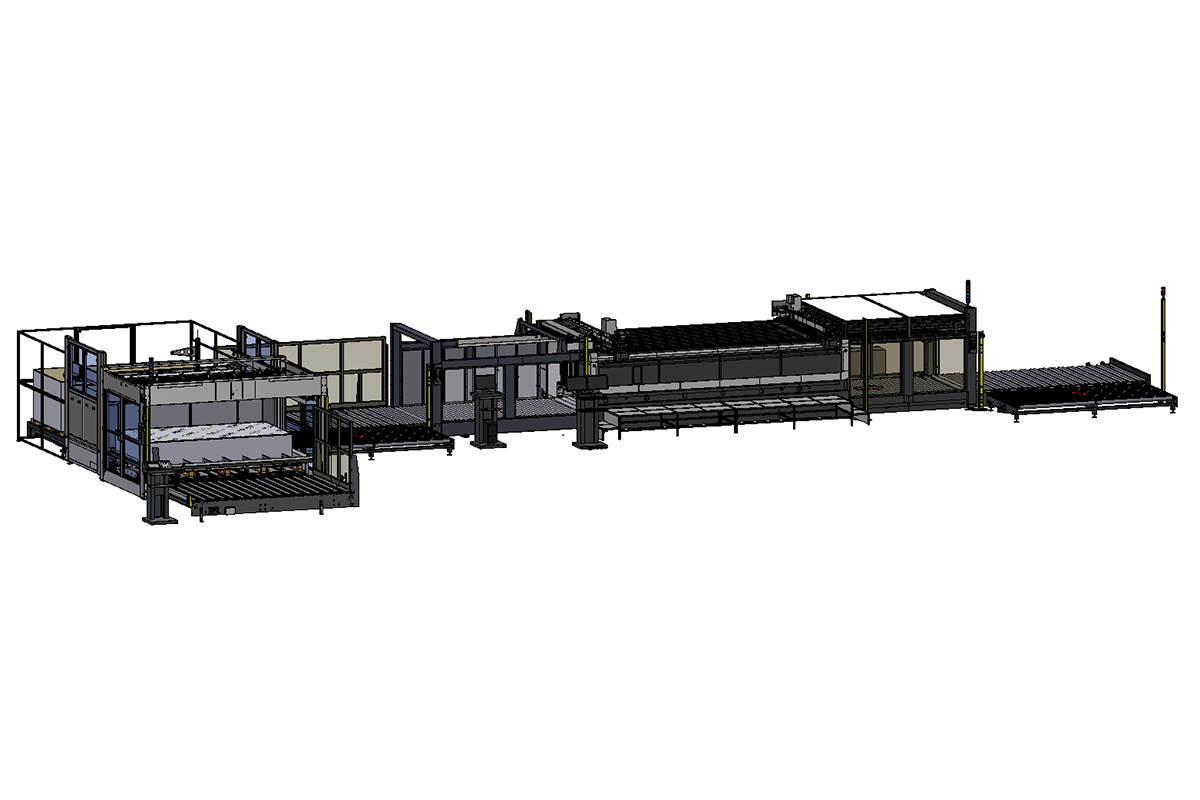
Elitron
Elitron has invested heavily in automation, with its Kombo TAV-R at the pinnacle, offering fully automatic, loading, cutting and creasing, unloading, with perfect stack alignment.
The company’s well known Heleva system loads sheets directly into a printer, and as sheets roll off the stacks are automatically transported by means of rollers to Reversa, Elitron’s new intelligent, large-format, sheet turner due to have been launched at Drupa 2020. Sheets are then turned so the print side is face down, before being fed into the Kombo TAV cutting system. The reference points are read from the underside in the pre-loading area, using Seeker System cameras, and the material is then cut and creased with the print side facing downwards. An Airo Panel unloading system then moves each cut sheet, without any nicks, directly to the unloading bay where they are again stacked.
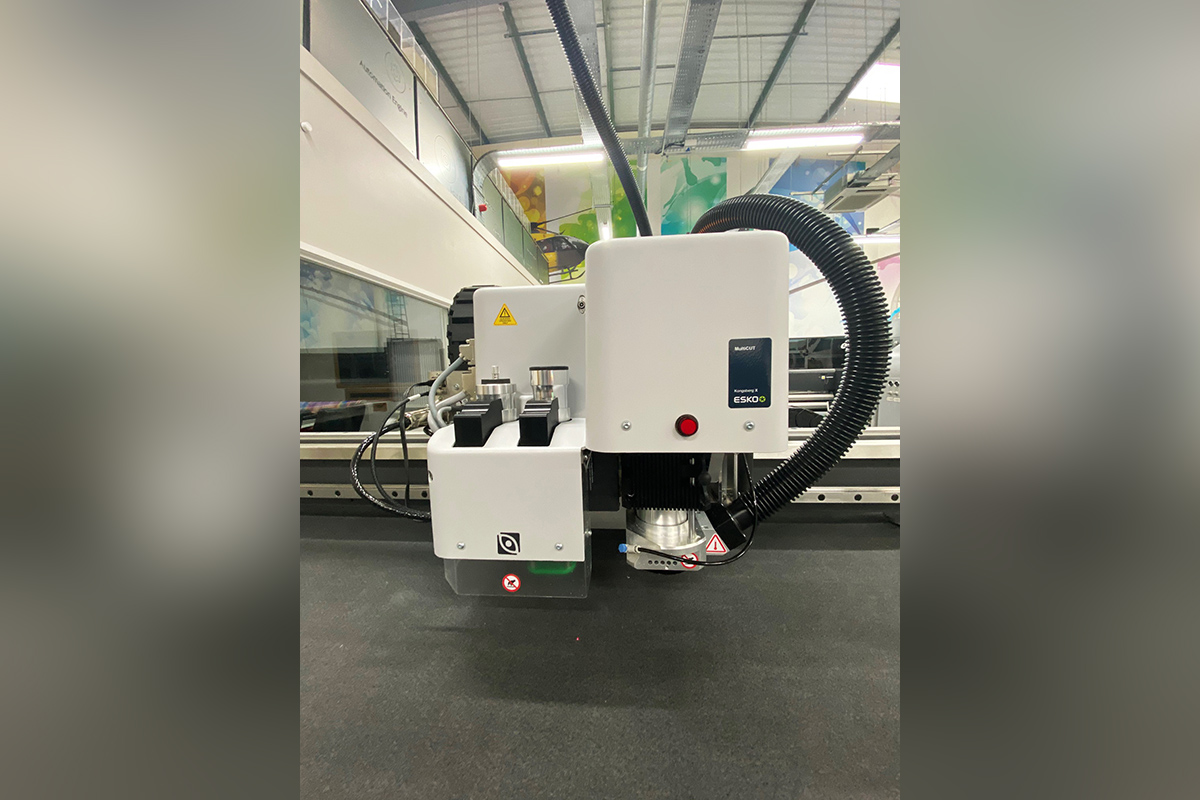
Esko
CMYUK is the exclusive distributor of Esko Kongsberg digital cutting tables in the UK and Ireland, with group director Robin East saying that during lockdown, there was high demand for the tables, “the driver undoubtedly being the huge demand in social distancing signage and many customers switching from their usual signage applications to producing vital PPE, and a massive upscale in the production of sneeze and countertop guards made from acrylic and Perspex.” He points out too that the conveyorised bed helped PSPs to automatically load material to minimise the amount of human contact between the operator, material, and final product.
Esko tables come with a Multi-Cut Tool Head as standard - extra tools can be added to help users wanting to produce more specialised items. According to East, many have used the 1Kw router tool to produce the types of clear protection screens now seen in shops etc. A rotary cutter tool is designed to cut fabrics, so useful for things like aprons and facemasks.
“Many Esko customers have experienced unprecedented volumes of work during this period. The i-Cut Suite software has been invaluable. Regardless of the type, source, and variety of job information, this software tackles all bottlenecks in your workflow from pre-flighting PDF files, prepping graphics, creating layouts and minimising wastage, printing and finishing in perfect registration,” adds East.
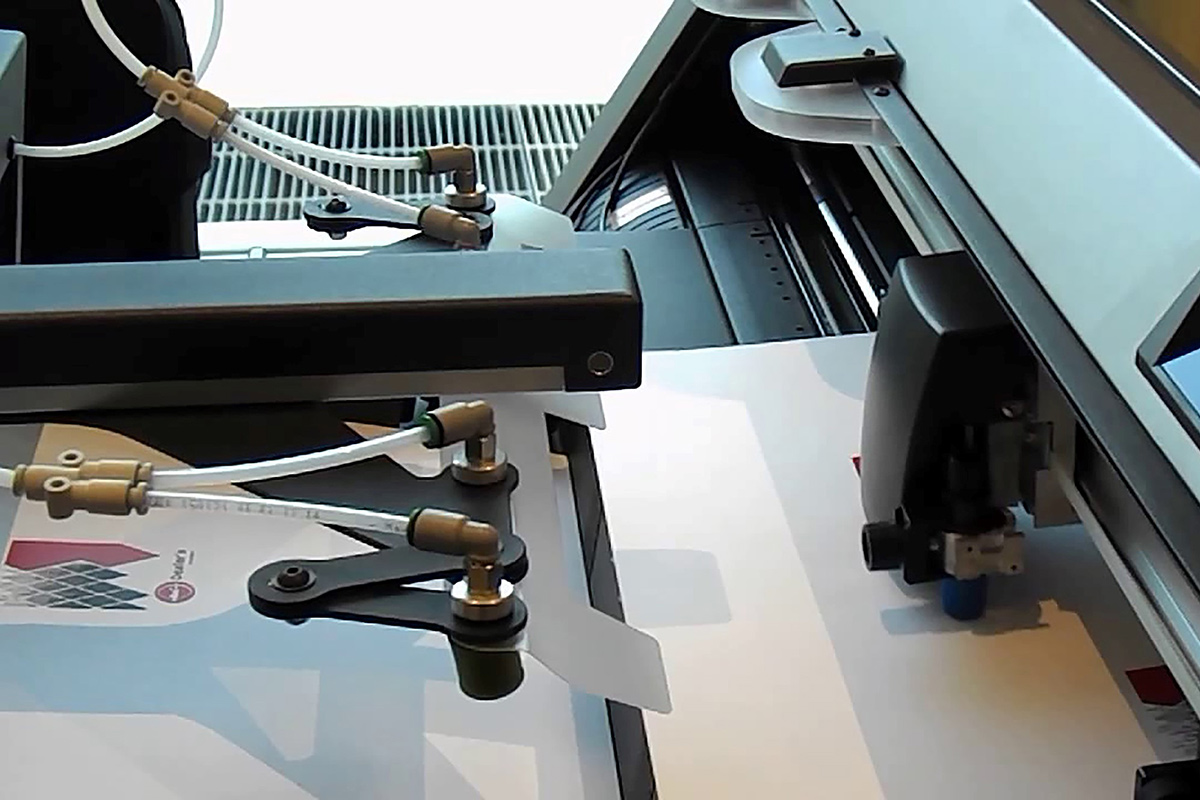
Flexa
As with CWT, Flexa is represented in the UK by Papergraphics. Graham De Kock points out that if you are performing straight edge cuts on media such as wallpaper, canvas, magnetic, polycarbonate films etc. you can automate the task with a Flexa XY cutter. The new Miura Plus HD boasts an upgraded frame and input feed system specifically designed with heavy rolls in mind - up to 400 mm (16in) in diameter and weighing up to 200 kg (441 lbs).
It combines horizontal and vertical cutting, has on-board mark detection camera systems, a new ‘muting’ function to avoid misreading of hidden marks, and can cut a 50m in as little as three minutes (1000 linear meters in an hour).
Graphtec GB
Graphtec GB has broadened its product offerings to include the Kala XY II 1650 Pro automatic trimmer, the latest F-Mark automatic digital die-cutting machine and the recently launched WID L300 laminator.
The 165mm-wide Kala XY II 1650 Pro operates at up to18m/min and will accommodate printed media 1mm thick in a roll diameter of 250mm. Key design features include an automatic media alignment facility, dual central and self-sharpening cutting/edging blades and LCD touchscreen control panel.
The F-Mark and F-Mark Plus automatic sheet-fed cutting systems have die, kiss and perforation cutting functions, with the latter also providing media creasing. A key attribute claimed for the F-Mark is that the die-cutting process is carried out automatically.
The machines are based on the Graphtec CE6000-40 and CE6000-60 respectively, incorporating software that is compatible with other popular software programs such as Adobe Illustrator.
The F-Mark will handle sheets up to 330 x 483mm, with larger sheet sizes possible with the F-Mark Plus option. Both machines will handle up to 120 sheets of media continuously, with further sheets added as required whilst the machine is still running.
Introduction of the L300 Laminator followed the recent partnership forged with Portugal-based WID Innovations whereby Graphtec GB is now the exclusive UK and Ireland distributor for both this machine and the new C Series laser cutters.
The L300 will handle media up to 25mm thick and at speeds of up to 3.5m/min. It’s a compact machine - 201cm (width) x 65cm (depth) x 135cm (height) - and includes twin silicon 130mm diameter-wide laminating rollers, pneumatic roller elevation and pressure/tensioning systems and allows automatic and manual laminating.
The FCX4000 and FCX2000 flatbed cutters - which have individual as well as shared design characteristics and performance capabilities - incorporate Graphtec’s latest proprietary ARMS (Advanced Registration Mark Sensing) system for optimum media plotting and cutting accuracy, together with Graphtec’s own-brand Pro Studio, Pro Studio Plus and optional Cutting Master 4 design and production software.
The FCX2000 is available in three sizes (60, 120 and 180), with respective processing areas of 610 x 920, 1,200 x 920 and 1,800 x 920mm, a cutting speed of 400mm/sec and a cutting force of 500gf up to 1kgf. There’s a choice of a vacuum bed or electrostatic material hold-down facility.
The FCX4000 is especially suited to the handling of more complex and difficult-to-cut materials and for post-processing print-on-demand applications. Available in two sizes (the 50ES and 60ES) with respective cutting areas of 660 x 488 and 976 x 660mm, the FCX4000 has a maximum speed of 750mm/sec, a cutting force of 600gf and utilises the electrostatic material hold-down option.
Matic
Atech has flagged-up three products it believes will help a PSP become more flexible. First up is the Matic Cronos Ultimate automatic sewing machine which it reckons requires very little operator skill to achieve a professional finish on textile and PVC graphics - with six pre-set channels for different applications. As with all Matic products it has Industry 4.0 integration.
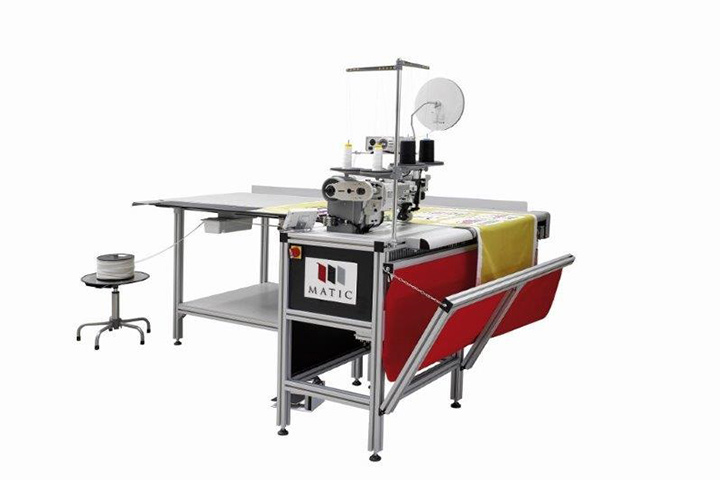
The Hera is an automatic impulse welding machine - available 4-8m wide - for hemming, joining and creating pole pockets, applying zips and keder to PVC and polyester graphics. Again, it’s said to require very little operator skill - simply select the application by pressing a button or reading a QR or barcode and insert the graphic. It has 99 memory channels for different materials and applications
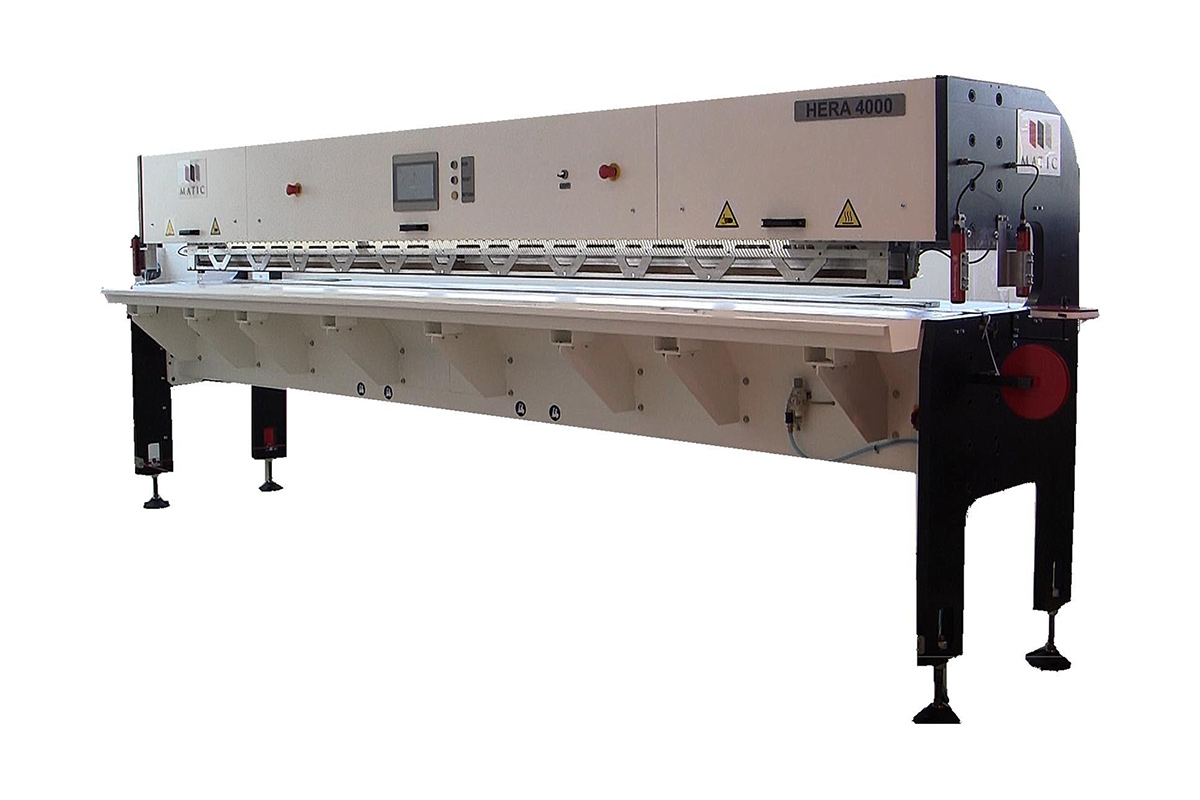
The Burkle LFC UV coater is simple to use and highlighted as ideal for those perhaps moving into social distancing signage. Available in 1300, 1600 and 2100mm widths, is handles flexible sheets, roll materials and rigid panels up to 80mm in thickness at speeds of up to 25 linear meters per minute. It can apply a range of cost effective UV curable laminates, such as gloss, matt, anti-graffiti, R9 anti-slip floor varnish, also colours including white.
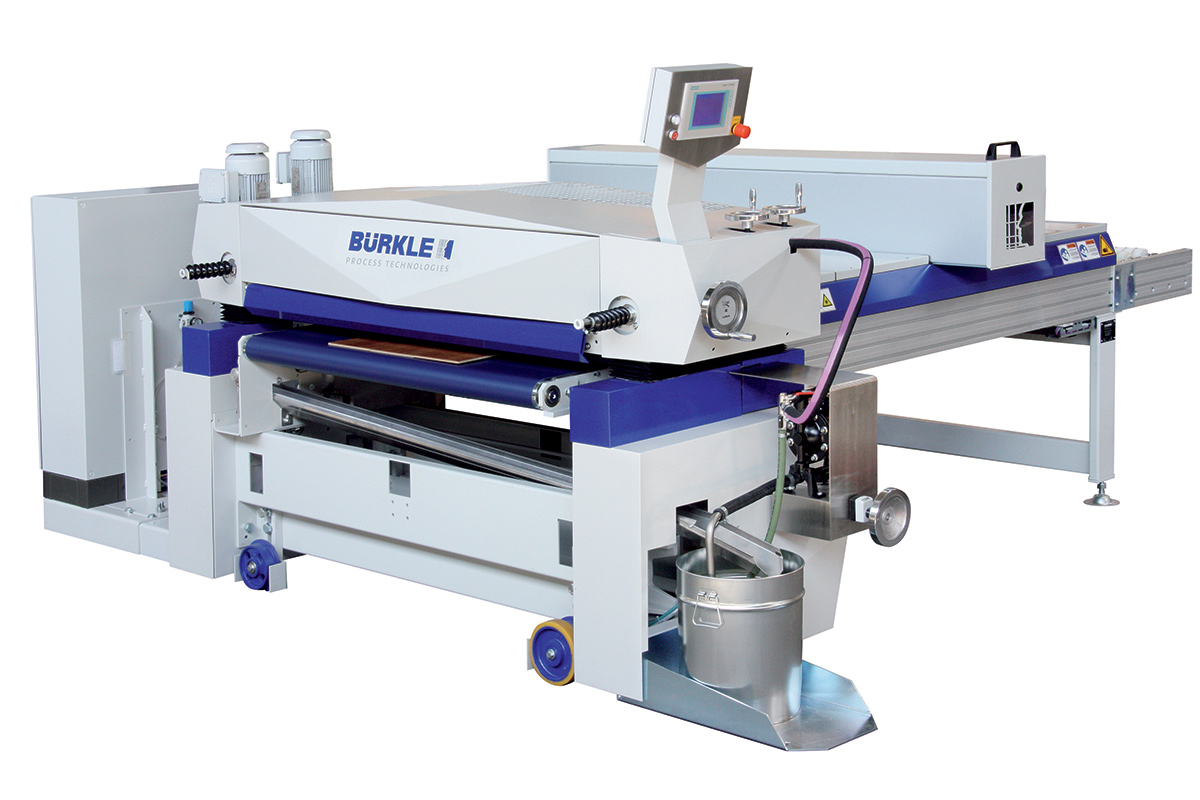
An automatic board feeder and stacker are available.

